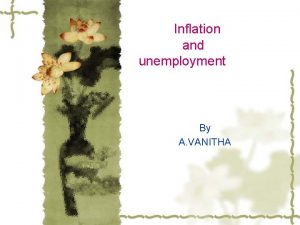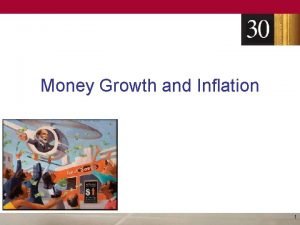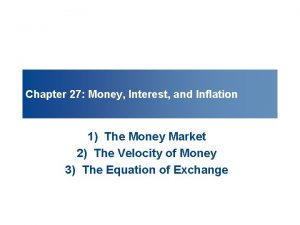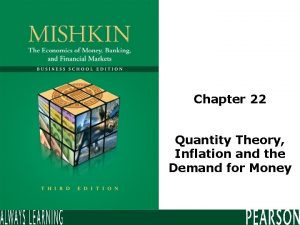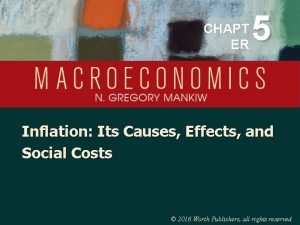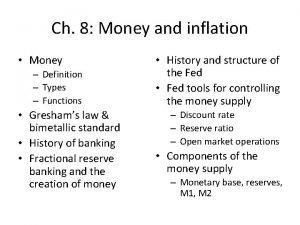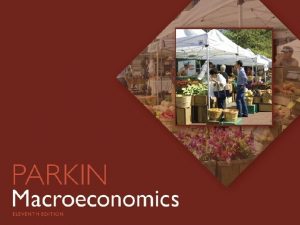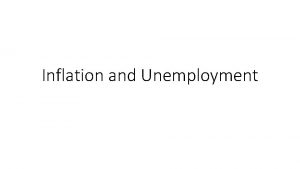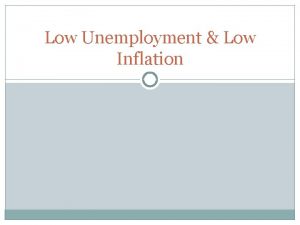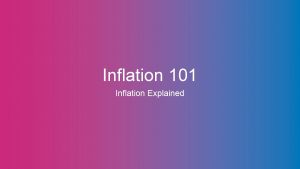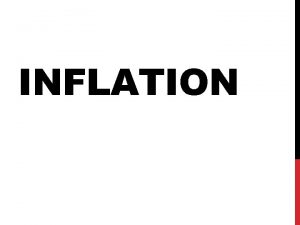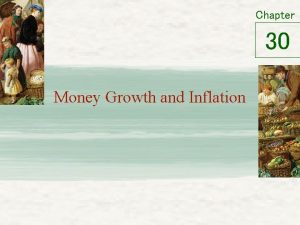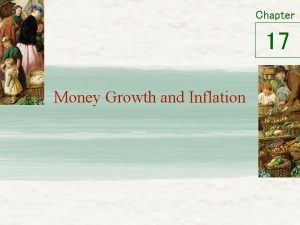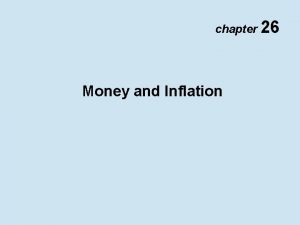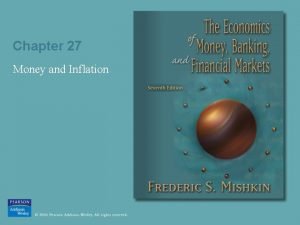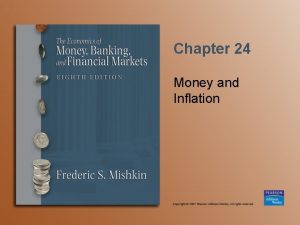Inflation and Unemployment Money and Inflation Rise in













- Slides: 13

Inflation and Unemployment

Money and Inflation Rise in money supply does not equal a rise in Real GDP in the long run, since price level rises as well by the same percentage Classical Model of Price Level – Since money supply and price level rise together, the Real Quantity of Money (M/P) stays at the original level Wages and prices are more responsive to money supply changes in periods of high inflation

The Inflation Tax Printing money to cover debt drives up inflation Inflation tax is the reduction in value of money held by public when the government prints money to cover deficits The U. S. can and does raise revenue by printing money – This is what happens when the Fed buys bonds to increase money supply

Hyperinflation During times of inflation, people hold as little money as possible Printing money (seignorage) creates revenue: (∆M/M) ● (M/P) OR Rate of growth of MS ● Real MS When govt needs to collect a certain amount but people are holding less money, must increase rate of growth… which can spiral out of control

Moderate Inflation and Disinflation Two shifts can lead to an increase in aggregate price level, emphasizing the importance of: Cost-push inflation Demand-pull inflation – which can result from expansionary policies Economic policies have political ramifications, which explains why inflation can get out of control

Output Gap & Unemployment Output gap is the difference between current level of output and potential output Because the unemployment rate is the natural rate + cyclical unemployment, there is a relationship between output gap and unemployment rate When aggregate output = YP, unemployment = natural rate When output gap is positive, unemployment < natural rate When output gap is negative, unemployment > natural rate

The Short Run Phillips Curve The SRPC depicts the negative short run relationship between the unemployment rate and inflation rate

Inflation Expectations and SRPC Expected inflation rate is the 2 nd most important factor affecting inflation Actual rate of inflation at any given unemployment rate is higher when expected inflation rate is higher

Long Run Phillips Curve Persistent attempts to keep unemployment low result in accelerating inflation To avoid this, unemployment must be high enough that actual rate of inflation = expected rate, resulting in nonaccelerating inflation rate of unemployment NAIRU means there is no longterm tradeoff between unemployment and inflation

Long Run Phillips Curve LRPC is vertical because it is at NAIRU (natural rate) Economists estimate NAIRU by looking at relationship between inflation rate and unemployment over the course of the business cycle

Costs of Disinflation To bring down inflation, contractionary policies raise unemployment above the natural rate for an extended period As a result, the economy loses potential output

Deflation Value of money rising over time Debt deflation results from borrowers cutting back their spending because of the additional burden of repaying money that is worth more, reducing aggregate demand – which leads to more deflation, which can spiral out of control

Effects of Expected Inflation Fisher Effect shows that interest rates are impacted by expected inflation one-to-one In case of deflation, interest rates will fall – but they are zero bound – which creates a limit for monetary policy Interest rate too low leaves no incentive to save and a credit freeze Liquidity trap results from sharp reduction in demand for loanable funds, causing interest rates to fall so low that monetary policy is ineffective
 Dana damian
Dana damian Relationship between inflation and unemployment
Relationship between inflation and unemployment Tricky dick: the rise and fall and rise of richard m. nixon
Tricky dick: the rise and fall and rise of richard m. nixon Rise and rise again
Rise and rise again Rise and rise again until lambs become lions
Rise and rise again until lambs become lions A union b example
A union b example Different types of unemployment
Different types of unemployment Why printing money causes inflation
Why printing money causes inflation The fisher equation
The fisher equation Velocity of money
Velocity of money Quantity theory of money equation
Quantity theory of money equation Hyperinflation examples
Hyperinflation examples 8 money types
8 money types Quantity theory of money equation
Quantity theory of money equation






